

Jumpy leg syndrome is often referred to as Restless legs Syndrome or Willis Ekbom Disease. It afflicts approximately 10 percent of the entire population. It is also thought to run in families – genetically, those with 50 percent of family members suffering from RLS will have someone else in their family who also has Restless Legs Syndrome. While most commonly diagnosed in adults, it can impact all age groups. A common thought is that children aren’t typically at risk, however it is more difficult for children to describe RLS which suppresses an accurate measure. It is also twice as common in women as in men. The symptoms can be very random and minor, but for others, RLS symptoms can be severe causing lack of sleep. Patients may find that they wake up multiple times per night having little chance of sustained deep sleep.
How Do You Know If You Have Jumpy Leg Syndrome (RLS)?
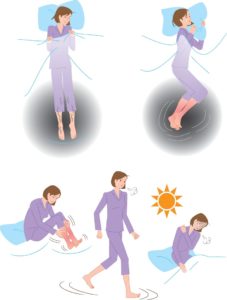
- Cramping in the legs
- Creepy-crawley sensations in the legs
- Pulling in the legs
- Involuntary jerking, sometimes referred to as periodic limb movement disorder
- Twitching of your muscles
All these symptoms lead to difficulty sleeping, and that is why Jumpy Leg Syndrome / Restless Legs is considered a sleep disorder. This leads to fatigue, depression, and poor health because of lack of sleep. The health effects from lack of sleep can lead to weight gain, high blood pressure, and diabetes. Studies also indicate it can lead to early death in men and women 1 2.
YES RESTLESS LEGS ARE A SERIOUS HEALTHCARE MATTER!
Causes Of Jumpy Leg Syndrome
Conventional medicine has been searching for solutions and causes. Currently you will hear that there are no known causes, however the following may help treat the condition.
- Iron Levels: Conditions such as Iron deficiencies like anemia may play a role. Some experts would recommend iron supplementation. Iron levels may also be affected by those with kidney failure leading to increased incidents of restless legs.
- Dopamine: This is a neurotransmitter and others believe taking medication to improve dopamine levels can help.
- Magnesium: Supplementation with magnesium has also been thought to help.
- Stretching: Stretching the muscles of the legs and message may also help.
Various medications are used to treat restless legs syndrome, they include:
- Gabapentin and Lyrica which are anticonvulsant drugs are also used to treat neuropathy.
- Ropinirole and Mirapex help to increase Dopamine (a neurotransmitter) levels in the brain.
Although helpful these medications come with side effects that include weight gain, daytime drowsiness, compulsive addictive disorders.
In severe Restless legs pain medications, narcotic may also be used.
Things You Can Start Doing Today!
When your symptoms are mild, or you’re in the early stages of Restless Legs, consider the following:
- Develop Good Sleep Habits: Go to bed earlier, by 10 pm is preferred as from 10-2 is when it’s thought the deepest sleep occurs, and urn off all electronic devices if possible one hour before bed.
- Diet: Avoid sugars and carbohydrates as these have a negative effect on the nerves in the legs.
- Consider a massage or a warm bath before bed.
- Exercise: Preferably early in the day and avoid exercise before bed
- Avoid alcohol.
The Most Important Question You Should Be Asking Your Doctor.
If my symptoms are in my legs, why can’t the cause be there, and why isn’t there more research to look into this as the source?Conventional Medicines Metabolic Approach
Conventional medicine has been searching for ways to treat those suffering from Restless Legs Syndrome metabolically, however, what has been done poorly is looking at the peripheral nervous system. If you search the web, you’ll find a lot of problems that seem to be associated with Restless Legs. Some will say it’s related to Dopamine levels in the brain. Others will claim it is from iron deficiencies. Diabetes, Parkinson’s, kidney and thyroid conditions may increase the chance of you having Restless legs syndrome. Although, most of these patients have one common issue – the issue is in the legs so why can’t the source of the problem be located there?
Introducing the Peripheral Nervous System.
This is an area of medicine that most doctors are poorly trained in and that is why the root cause has taken so long to discover. Also, big pharma promotes more research in the area of medications that can be used and ways to argue their effectiveness. Until recently, very little research has been done to better understand how the nerves in the legs can be implicated. Yes, the symptoms are in the legs and therefore the solution can also be there. Our research and our patients are proof of this alternative.
Why Do We Say It’s Mechanical, Not Metabolic?
As a podiatrist, I was trained 20 years ago to decompress, and open nerve tunnels in the legs to reverse neuropathy – like carpal tunnel surgery. My training was from a professor of plastic surgery and neurosurgery at John Hopkins. Nine years ago, two additional tunnels in the legs were evaluated for compression and tightness. When the legs were decompressed and opened, the symptoms of jumpy leg syndrome / Restless Legs were reversed. Gradually, more patients regionally and nationally are choosing this as an option. Since then, I have published one peer reviewed paper, and we have recently submitted a second paper for publication with more compelling data than the first paper. I’ve also written a book, A Perfect Night’s Sleep regarding my history, research, and patient stories. I’ve also received an Award from my peers for my research.
- Evidence tells us tight nerve tunnels in the legs are the problem (mechanical issues)
CLINICAL EXAMINATION
Our clinical findings after doing a lower extremity examination support that nerve damage is present. Patients often have:
- Decreased sensation
- Decreased muscle strength
- Associated symptoms of numbness tingling and decreased balance.
- Ultrasound – diagnostic ultrasound may show nerve compression in the involved nerve tunnels.(video)
RESEARCH
We provide research to our patients and the rest of the medical community. We have one published paper with another paper recently submitted to be published.
Our goal at Anderson Podiatry Center is to educate as many people as we can of this other important option. Yes, like you and so many others, we have helped give the opportunity to get your good night’s sleep back. And to improve your mental and physical well-being!
Dr. James Anderson consult your local prodiatrist at the following clinical locations in Fort Collins and Broomfield, Colorado.
References
- Prospective study of restless legs syndrome and mortality among men
Yanping Li, Wei Wang, John W. Winkelman, Atul Malhotra, Jing Ma, Xiang Gao
Neurology Jul 2013, 81 (1) 52-59; DOI: 10.1212/WNL.0b013e318297eee0 - Nerve Decompression and Restless Legs Syndrome: A Retrospective Analysis
James C. Anderson, Megan L. Fritz, John-Michael Benson Brian L. Tracy https://doi.org/10.3389/fneur.2017.00287

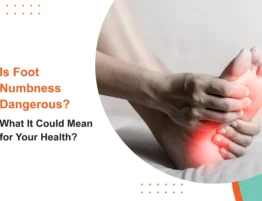
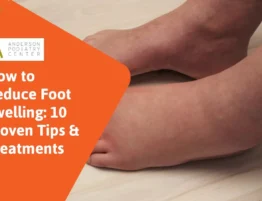
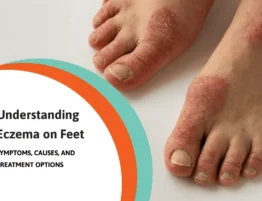



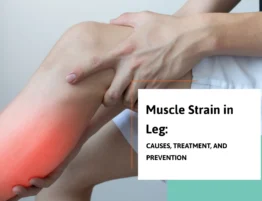
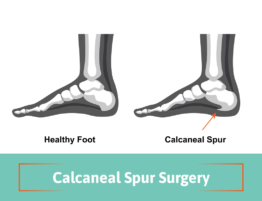
Write a comment: